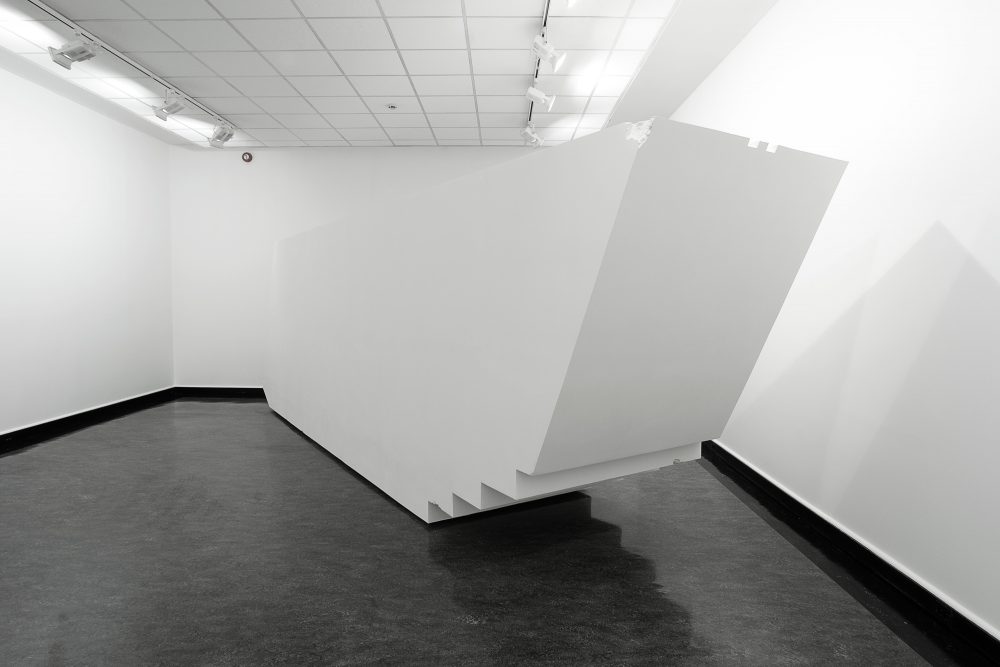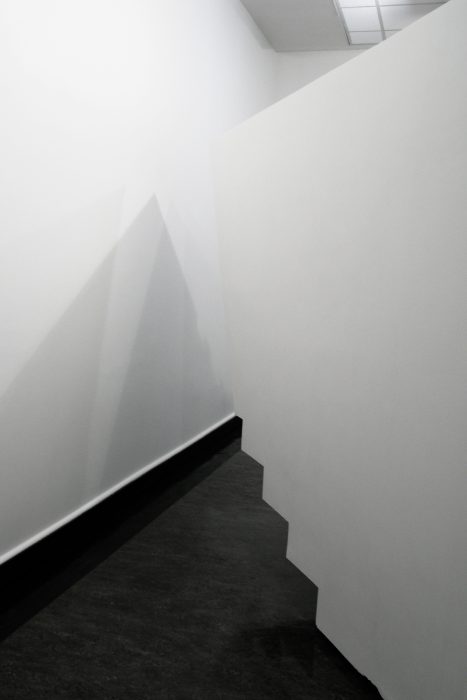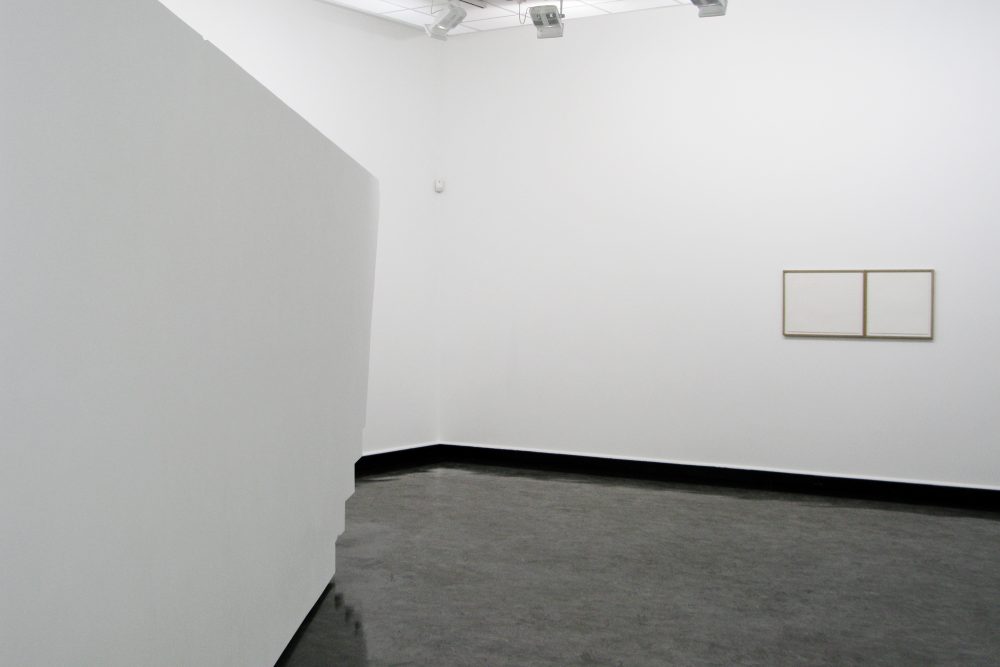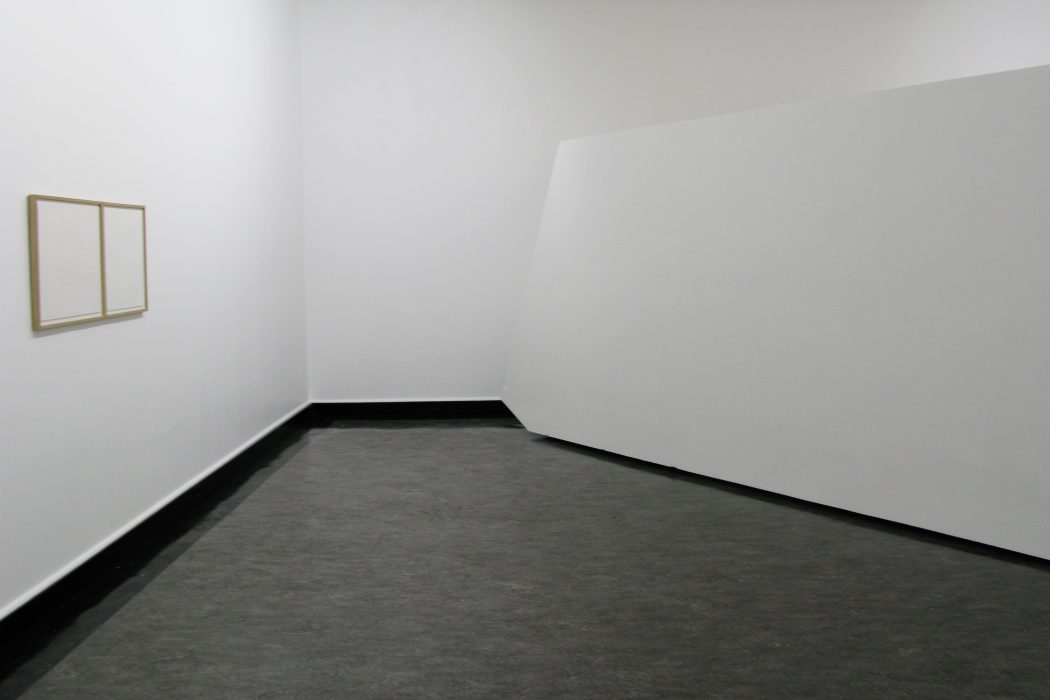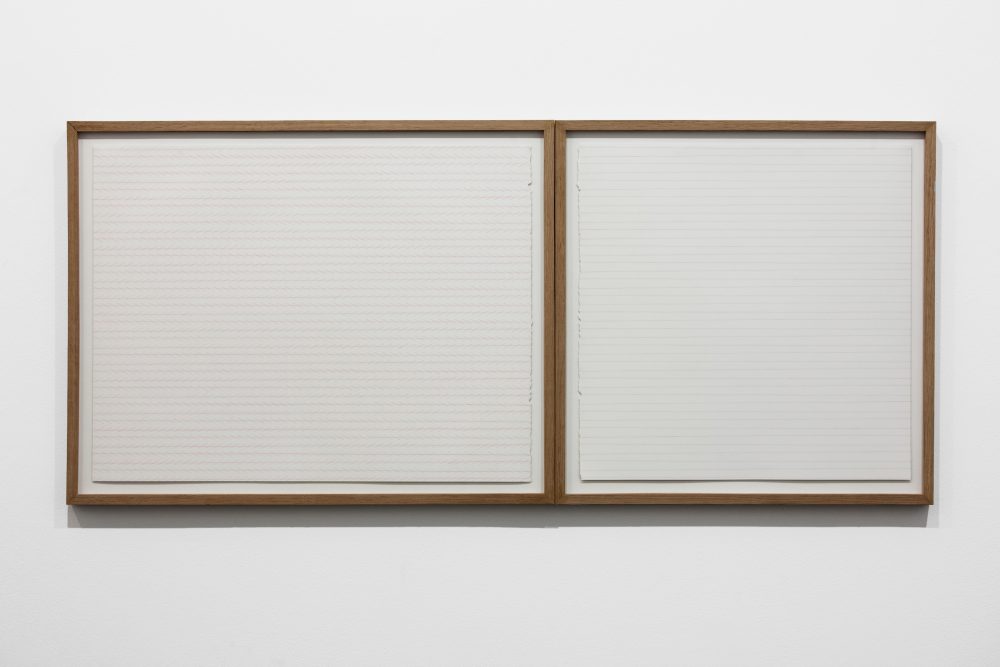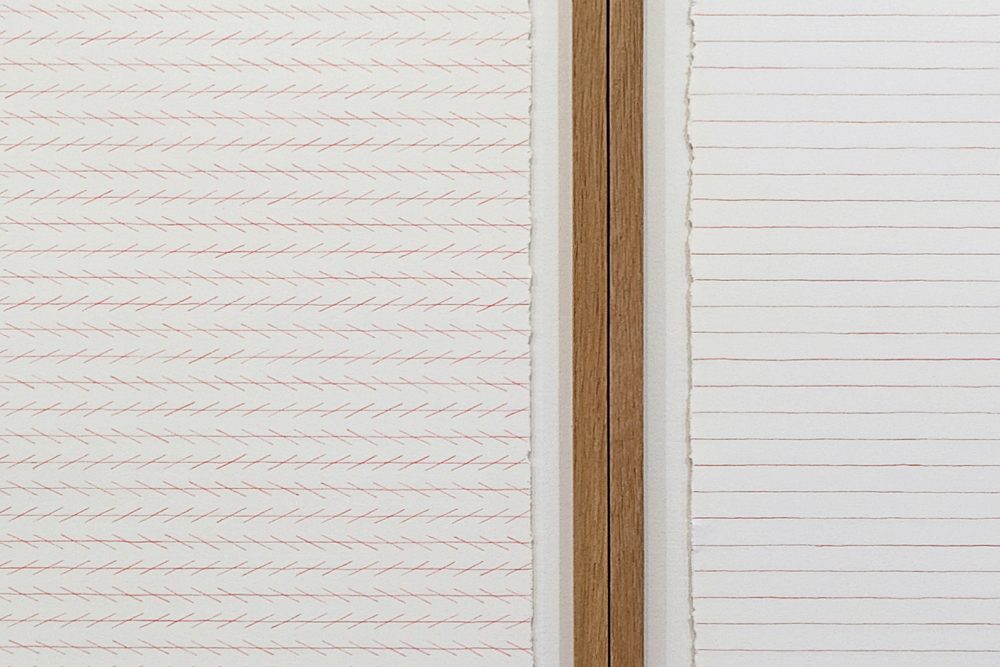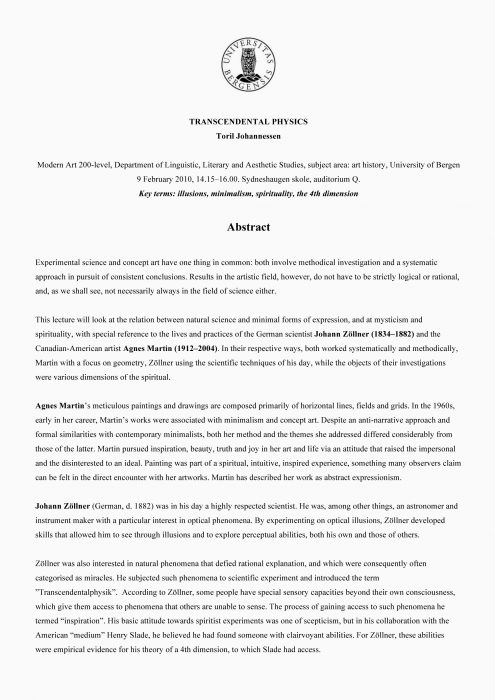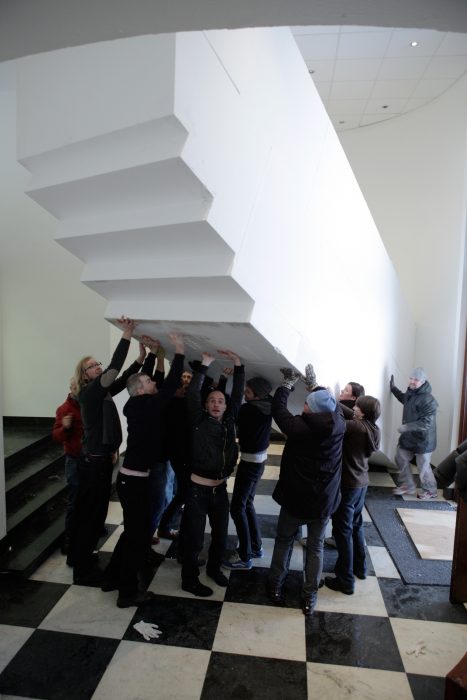The exhibition Transcendental Physics included the site specific sculpture 4D Construction, the drawings Zöllner’s Illusion & Agnes Martin’s Lines and the lecture Transcendental Physics.
The sculpture 4D construction is the largest object that can be fitted – in one piece – into the gallery space where the sculpture was displayed. The process of finding the shape was based on a precise measurement of all the rooms and passages that the sculpture had to move through to be transported into the gallery space. The shape and volume of the object was thus determined by the architectural framework of the exhibition at Bergen Kunsthall NO5.
The drawings Zöllner’s Illusion & Agnes Martin’s Lines are based on an imagined point of contact between the German scientist Johan Zöllner (1834-1882) and the Canadian-American artist Agnes Martin (1912-2004). Martin and Zöllner were separated by time, geography and discipline, but in their own ways they both explored spiritual dimensions through their methodical investigations of geometry. My drawings are inspired by Martin’s geometric motifs of carefully executed drawings and paintings of lines and stripes, and by Zöllner’s discovery that parallel lines appear to be oblique when crossed by shorter lines at a particular angle (known as «Zöllner’s illusion»).
The lecture Transcendental Physics outlined imagined connections between natural science and minimal forms of expression, spiritualism and 19th century theories of a spatial fourth dimension.
-

4D Construction (761 x 227 x 148 cm). Styrofoam, sanded and sealed.
-

4D Construction and Zöllner’s Illusion & Agnes Martin’s lines.
-

4D Construction and Zöllner’s Illusion & Agnes Martin’s lines (tilted).
-

Zöllner’s Illusion & Agnes Martin’s lines (tilted). Color pencil drawings (46 x 101 cm).
-

Zöllner’s Illusion & Agnes Martin’s lines. Detail, color pencil drawings (50 x 105 cm).
-

Abstract for the lecture Transcendental Physics, University of Bergen.
-

4D Construction, moving the object into the gallery space, Bergen Kunsthall NO5 .
